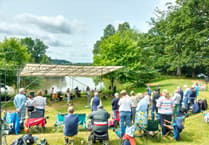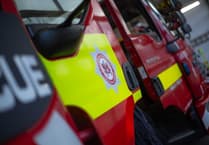THIS year’s Big Butterfly Count paint a better picture for butterflies than had been feared.
The wetter summer was good for butterflies, with average number of butterflies spotted being highest number for four years.
In total, over 1.5 million butterflies and day-flying moths were recorded from 14 July - 6 August. This builds on the all-time low in 2022.
The most-seen species this year was the Red Admiral, with 248,077 recorded - an increase of 338% on last year’s Count and the first time the species, which is increasing in the UK as a result of climate change, has taken the top-spot.
However, this good news is in contrast with what the long-term trends are revealing. Released for the first time this year, these show that since the Big Butterfly Count started 13 years ago, many species have significantly decreased. It is a further warning sign that nature everywhere is in crisis – butterflies, as well as forming a vital part of the food chain, are considered significant indicators of the health of the environment.
Dr Richard Fox, Head of Science at Butterfly Conservation, explained: ‘One of the biggest threats butterflies in the UK face is habitat loss. While the weather certainly has an impact on numbers from year to year, butterflies, moths and many other species can generally cope with variable weather. What they can’t cope with is habitat destruction.
‘Butterflies need a place to live. If they can feed, breed and shelter, they can thrive. By creating a Wild Space in your outdoor area you can help to reverse the losses and start to turn around the fortunes of our declining butterflies.’
Anyone, anywhere, can create a Wild Space. Whether it’s leaving a patch of long grass in your garden or planting a small selection of nectar rich plants on a balcony, the opportunities are vast and everyone can make a difference.
Dr Richard Fox concluded: 'Nearly 137,000 Big Butterfly Counts were recorded this summer and if every single person who helped with the Count creates a Wild Space, we can build a UK-wide network of spaces for butterflies to feed, breed and shelter. By creating a Wild Space everyone can make a difference and help butterflies and moths thrive.'
Butterfly Conservation has free resources and guidance on creating a Wild Space available, including accessible, tailored, simple advice for anyone to have a go.
To find out more about Wild Spaces visit: https://wild-spaces.co.uk/
To find out more about Butterfly Conservation visit: https://butterfly-conservation.org/





Comments
This article has no comments yet. Be the first to leave a comment.